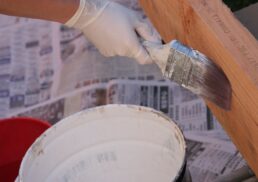When it comes to building and maintenance, your goal is not just to fix what’s broken but to anticipate and prevent future issues while effectively managing costs. Are you equipped with the strategies to navigate this complex task effectively? This article guides you through the vital aspects of preventive, corrective, and routine maintenance, with a focus on practical techniques to balance cost with efficiency.
Table of Contents
Key Takeaways
Building maintenance management is critical for ensuring safety, functionality, and efficiency, which includes preventive, corrective, and routine maintenance tasks aimed at minimizing failures, reducing costs, and ensuring the longevity of facilities.
Technological advancements in building maintenance, such as CMMS software, have streamlined task management and improved productivity, while ongoing training and certifications for maintenance professionals are vital for skill enhancement and career progression.
An effective in-house maintenance department relies on specialized roles and teamwork, from facilities managers to maintenance technicians, to adhere to maintenance schedules and promptly address facility needs, all while leveraging resources and tools like checklists for optimal building care.
Exploring the Core of Building and Maintenance
The definition of building maintenance involves the ongoing upkeep of a facility and its surroundings to ensure safety, cleanliness, and functionality. This includes regular care and maintenance to preserve the conditions of the building and its grounds. An example of building maintenance is vast, encompassing tasks such as:
Cleaning
Painting
Repairs of building systems
Daily operations tasks
This requires coordination of various roles, whether they are in-house staff or outsourced services, to ensure the safety, comfort, and functionality for tenants at all times while minimizing failures and downtime in electrical distribution systems.
Effective building maintenance management is paramount in enhancing productivity, employee engagement, and job satisfaction. It also plays a crucial role in increasing the attractiveness of properties for renters and boosting resale value. By addressing potential risks and overcoming challenges such as design flaws and ageing infrastructure, maintenance management ensures the longevity and efficiency of buildings. Additionally, proper maintenance can lead to significant cost savings through more predictable maintenance budgets and enhanced efficient energy management.
Maintenance is not just about addressing immediate issues but also about implementing strategies that prevent problems from arising in the first place. This proactive approach is essential in preventing costly or tragic incidents, ensuring that the property remains in optimal condition for its occupants. By understanding the core of building and maintenance, we can appreciate the extensive efforts involved in keeping our buildings operational and safe.
The Pillars of Building Maintenance Work

Building maintenance encompasses the three main types of building maintenance: preventive, corrective, and routine maintenance. Each type addresses different aspects of maintenance work, from preventing issues before they arise to responding quickly to fix them and ensuring consistent upkeep of the property. These pillars are supported by a variety of tasks, including cleaning, fire safety, security, and the integration of innovative technologies like single-pair Ethernet and AI-driven energy optimization.
Preserving Building Integrity with Preventive Maintenance
Preventive maintenance is a critical strategy for maintaining building integrity and reducing the likelihood of emergencies. By implementing preventive measures, buildings can reduce maintenance costs by 12-18% and identify issues before they become significant problems. This approach includes routine tasks such as maintaining HVAC systems, which can extend the life of the system, improve performance, and enhance energy efficiency.
Tasks involved in preventive maintenance include regularly cleaning or replacing HVAC air filters to maintain high air quality and optimal system performance. Additionally, applying protective paints, sealants, coatings, and films to exposed surfaces helps in preventing damage and prolonging the building’s lifespan. By performing these preventive maintenance tasks, the building remains in good condition and minimizes the need for emergency repairs.
Seasonal preventive maintenance checklists are also vital. They cover tasks such as:
servicing HVAC units and preparing landscaping in the spring
inspecting roofs and windows in the summer
winterizing systems in the fall
preparing for snow and inspecting for ice dams in the winter
These checklists ensure that all necessary preventive tasks are completed timely and seasonally, keeping the building in optimal condition year-round.
Quick Response with Corrective Maintenance
Corrective maintenance is all about addressing and fixing issues as they arise to restore building comfort and functionality. The primary goal is to return a facility to its optimal conditions, ensuring that spaces are functional and comfortable for occupants. This type of maintenance is crucial for minimizing disruptions and downtime, which can significantly impact the daily operations of a building.
A well-designed corrective maintenance strategy is essential for quick response and repair. By having a plan in place, maintenance teams can efficiently address issues, reducing the time taken to restore normalcy. This proactive approach ensures that any problems are swiftly dealt with, maintaining the overall functionality and comfort of the building.
Ensuring Consistency with Routine Maintenance Tasks
Routine maintenance tasks are essential for safeguarding a building from decay and preserving its functionality. These tasks, which include janitorial work, light bulb replacement, and fire alarm testing, are crucial for maintaining the aesthetics and operational standards of a building. Janitorial staff are responsible for essential cleanliness and sanitary tasks such as sweeping, mopping floors, vacuuming carpets, emptying trash, and cleaning bathrooms.
Aside from daily janitorial work, routine maintenance also involves activities like replacing light bulbs, cleaning windows, and testing fire alarms throughout the year. To ensure effective and regular maintenance, janitors adhere to a building maintenance schedule that outlines when specific tasks should be performed. This systematic approach helps in maintaining the building’s overall condition and functionality.
Blueprint for an In-House Maintenance Department
An in-house maintenance department is composed of several key roles, each with specialized responsibilities. The facilities manager oversees the entire department, ensuring that all maintenance tasks are aligned with the building’s operational needs. Maintenance supervisors, including the maintenance supervisor, are pivotal in managing workers, overseeing the scheduling of maintenance activities, and contributing to the hiring and training of new employees.
Maintenance technicians play a crucial role in inspecting, maintaining, and repairing a building’s HVAC and utility systems. They typically operate through assignments from a Computerized Maintenance Management System (CMMS), ensuring that all tasks are completed efficiently and in compliance with standards. Building maintenance workers support these efforts by performing routine tasks and assisting with more complex repairs.
Effective communication within the maintenance department is paramount. It ensures that tasks are completed accurately and in a timely manner, adhering to established protocols. By fostering a collaborative environment, the department can address maintenance issues swiftly and maintain the building’s functionality and safety.
Advancements in Building Maintenance Services

The advent of building maintenance software has revolutionized how maintenance tasks are managed, including control point management. Tools like Computerized Maintenance Management System (CMMS) software and property management software streamline daily tasks, automate work orders, and improve team productivity. These technologies facilitate pinpointing areas of improvement and provide actionable tips to streamline building and grounds management.
Examples of such software include UpKeep and FTMaintenance Select, which offer features like preventive maintenance and asset tracking. These tools enhance work order management and boost team productivity, leading to better organization, communication, accountability, and cost savings. By leveraging these advanced technologies, maintenance departments can operate more efficiently and effectively.
Empowering Maintenance Professionals with Certifications and Training
Certifications and training programs, especially maintenance certifications and training, are essential for maintenance professionals to enhance their skills and advance their careers. Workers can apply for various certifications to increase their knowledge and expertise, with professionals holding IFMA credentials often reporting significant career advancements and salary increases. Key certifications include HVAC Certification, Building Systems Maintenance Certification, and Building Operator Certification, covering areas such as plumbing, HVAC systems, water treatment, and energy management.
Ongoing training is crucial for maintaining sharp skills and ensuring compliance with relevant rules and regulations. Training maintenance workers is essential, as most maintenance certifications do not require specific educational qualifications for entry at the technician level, although a high school diploma or GED is commonly expected by employers. By continually updating their knowledge and skills, maintenance professionals can stay ahead in their field and ensure they are providing the best possible service.
The Backbone of Facility Management: Maintenance Teams
Building maintenance teams are the backbone of facility management, playing a crucial role in planning, scheduling, and managing maintenance activities. Facility management professionals, including maintenance managers and supervisors, are responsible for overseeing these activities, ensuring tasks are completed on time, and maintaining the building’s functionality and safety. They also play a key role in hiring, training, and assigning tasks to maintenance workers.
Maintenance technicians are essential in facility management. Their responsibilities include:
Inspecting, maintaining, and repairing HVAC and utility systems
Performing routine maintenance to keep systems running efficiently
Proactively preventing major breakdowns and ensuring safety
Their work often goes unnoticed when done correctly, but it is crucial for the smooth operation of facilities and their electrical systems.
Leveraging Resources for Maintenance Excellence
Maintenance professionals can leverage various resources to achieve maintenance excellence. Certifications recognize specialized knowledge or skills in building maintenance, providing building maintenance professionals with a competitive edge. The certification process typically involves an application, payment of fees, and passing assessments, with periodic recertification required to maintain the credentials.
Subscribers to maintenance platforms can receive the best maintenance advice straight to their inbox with regular updates, ensuring they stay informed about the latest tips and trends. By staying updated with the latest maintenance news and resources, professionals can continuously improve their practices and maintain high standards.
Tools of the Trade: Building Maintenance Checklist
Building maintenance checklists are essential tools for ensuring that all necessary maintenance tasks are completed efficiently and effectively. These checklists, created by operational managers, outline the steps for inspecting and maintaining various areas of a facility. They help identify which areas require attention first, ensuring that maintenance technicians can prioritize their tasks.
The checklists consist of various tasks that maintenance technicians must fulfill as part of their operational duties. By following these checklists, maintenance teams can ensure that all aspects of the building are maintained properly, contributing to the overall functionality and safety of the facility.
Learn more, visit The complete guide to maintenance strategy.
Summary
In conclusion, effective building and maintenance management is crucial for ensuring the safety, functionality, and comfort of a facility. By understanding the core principles of building maintenance and implementing strategies such as preventive, corrective, and routine maintenance, building owners and maintenance professionals can maintain their properties in optimal condition. Leveraging modern tools and certifications further enhances the efficiency and effectiveness of maintenance practices.
The maintenance teams, supported by advanced technologies and ongoing training, are the backbone of facility management. Their proactive work in planning, scheduling, and managing maintenance activities ensures that buildings remain safe and operational. By staying informed about the latest tips and trends and utilizing resources effectively, maintenance professionals can achieve excellence in their field.
Frequently Asked Questions
What are the main types of building maintenance?
The main types of building maintenance are preventive, corrective, and routine maintenance, all of which are essential for the upkeep of a building.
Why is preventive maintenance important?
Preventive maintenance is important because it enhances building durability, reduces emergencies and costs, and allows early identification of issues. Regular maintenance can help prevent costly repairs and ensure the longevity of your building.
What roles are included in an in-house maintenance department?
An in-house maintenance department includes roles such as facilities manager, maintenance supervisor, maintenance technician, and maintenance worker. These individuals are crucial for the smooth functioning of the department.
How can maintenance professionals benefit from certifications and training?
Maintenance professionals can benefit from certifications and training by enhancing their skills, advancing their careers, and ensuring compliance with relevant rules and regulations.
What are some examples of building maintenance software?
Some examples of building maintenance software are UpKeep and FTMaintenance Select, offering features like preventive maintenance and asset tracking.









